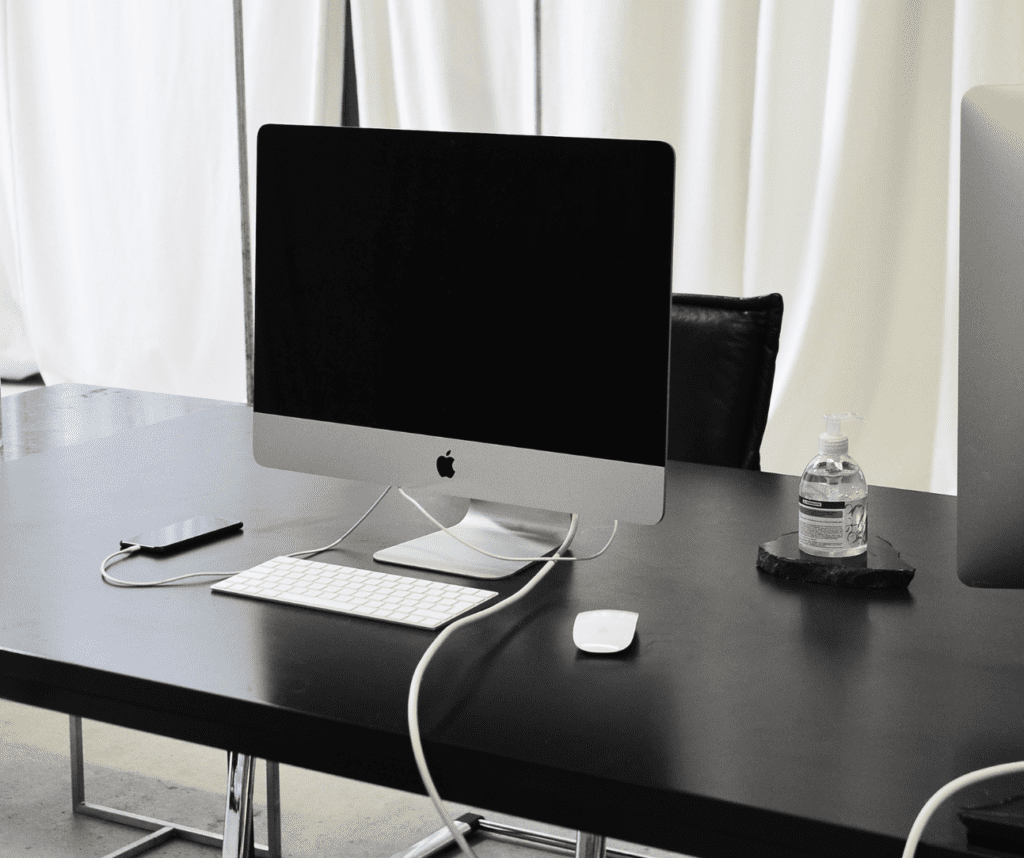
Importance of Redundancy When Building a Team for Your Firm
Summary
At DesignDash, we understand that building a resilient and adaptable team is crucial for long-term success. This article explores the importance of redundancy—not as inefficiency, but as a strategic approach to ensuring business continuity, seamless collaboration, and risk mitigation. By structuring your firm so that key responsibilities aren’t dependent on just one person, you create a more stable, agile, and growth-oriented environment.
Reflection Questions
How does your current team structure handle unexpected absences or transitions, and where might redundancy be lacking?
In what ways can cross-training or overlapping skill sets enhance your firm’s long-term sustainability?
What small but impactful steps can you take today to build redundancy without increasing inefficiency?
Journal Prompt
Think about a time when your firm faced a challenge due to a key team member being unavailable. How did the situation unfold, and what were the biggest pain points? If you had built in redundancy, how might things have gone differently? Outline a plan for incorporating redundancy in at least one critical area of your firm.
If someone in your firm quits, does all their work fall on you? Are the texts, emails, and phone calls never-ending when you go on vacation? If the scope of a project changes, does everyone scramble? In this industry, change is constant. That’s why building a team that can adapt to unforeseen circumstances is essential. One key to building a flexible, adaptable team is redundancy. When you have redundant systems, there are backup plans or alternative solutions to rely on if something goes wrong with the original plan. As your firm grows and roles evolve, redundancy is even more critical. Let’s delve deeper into the importance of redundancy when building a team and detail how you can make your firm more adaptable.
What is Redundancy?

Redundancy refers to duplicating critical components or processes to ensure that a system remains functional even if one part fails. In other words, it’s like having a backup plan for your backup plan.
This is because no matter how skilled and reliable your employees are, there will always be unexpected challenges and obstacles that arise. By incorporating redundancy into your team structure, you can help mitigate these risks and ensure your firm continues running smoothly even when issues emerge.
Of course, redundancy isn’t foolproof. There may still be situations where multiple failures coincide, leaving your team unable to address them all at once. However, you can significantly reduce the likelihood of this happening and increase your chances of success.
Why Is Redundancy Important?
Redundancy may seem counterintuitive at first glance, but there are several reasons why redundancy is essential. First and foremost, redundancy ensures that tasks can still be completed even if one person or system fails. Imagine relying on just one employee to complete a critical project. However, the project can continue without interruption if multiple employees are trained to handle the same task.
Redundancy also helps to distribute the workload more evenly among team members. When everyone is responsible for a specific task, no one person becomes overwhelmed with too much work. Having multiple people trained in the same skill set allows for greater flexibility when scheduling shifts or assigning tasks.
Another benefit of redundancy is that it promotes cross-training and knowledge-sharing within the team. Multiple people with similar skill sets can learn from each other and share best practices, fostering a more knowledgeable and skilled team overall. Sharing experiences and knowledge fosters a sense of teamwork and collaboration that ultimately benefits your entire firm.
Finally, redundancy can help mitigate risk and prevent costly mistakes. For example, if two people must review financial reports, they are more likely to catch errors than if only one person is responsible.
Types of Redundancy in the Workplace

Several types of redundancy can be implemented when building a team. These include skill or functional redundancy, structural redundancy, equipment redundancy, temporal redundancy, and communication redundancy. In this post, we will focus primarily on skills redundancy and communication redundancy. We will address structural redundancy or process redundancy in a follow-up post.
Functional or Skill Redundancy
Functional redundancy is a term used to describe the duplication of roles within a team. It means that multiple people are capable of performing the same task or job function, which can be incredibly beneficial in certain situations.
Let’s say you have a design team in-house with two designers who have similar levels of experience, expertise, and familiarity with the same project. If one designer falls ill, goes on vacation, or takes time off for personal reasons, having another designer who can step in and continue their work ensures that the project stays on track. This redundancy also helps prevent burnout among team members by distributing the workload more evenly.
Functional redundancy can also improve overall team performance. It does so by allowing individuals to specialize in specific areas while still being able to contribute to other aspects of the project. This creates a sense of flexibility and adaptability within the team, which is essential in today’s fast-paced business environment.
However, it’s important to note that functional redundancy should not be confused with overstaffing or unnecessary duplication of roles. The goal is to strike a balance between having enough redundancy to ensure continuity and efficiency without creating unnecessary costs or redundancies.
Structural or Process Redundancy

The second type of redundancy is called structural or process redundancy. This involves having backup systems or processes in place to ensure that work can continue even if something goes wrong with the original.
For example, if your team relies heavily on cloud-based storage solutions, it would be wise to have local backups of all critical files and data in case the cloud service experiences downtime or other issues.
But this isn’t related solely to equipment. Structural redundancy also relates to skills redundancy in establishing processes by which one team member can take over for another if they are OOO.
Automating messages on social media accounts or via email until a team member can respond personally is a simple example of process redundancy. Any standardized processes your team can easily reference and execute provide structural redundancy. These include standardized processes related to onboarding, branding, interacting with clients, etc.
Fuel your creative fire & be a part of a supportive community that values how you love to live.
subscribe to our newsletter
*please check your Spam folder for the latest DesignDash Magazine issue immediately after subscription

Equipment or Resource Redundancy
As you probably guessed, equipment redundancy means having backup equipment if the primary equipment fails or malfunctions. What would you do if your firm relies on computers equipped with specific software and one suddenly crashes? Without equipment redundancy, you’d be stuck waiting for repairs or replacements, which could take days or weeks.
This downtime can result in lost productivity, missed deadlines, and, ultimately, lost revenue. Having redundant equipment ensures that your team can continue working without interruption, even if something goes wrong with their primary tools. It’s like having a spare tire in your car – you hope you never need it, but it’s there just in case.
No designer, procurement manager, or firm owner wants to spend hours troubleshooting office equipment or software. Equipment redundancy often goes hand-in-hand with cross-training or skills redundancy. Say multiple team members are familiar with the equipment and can address minor but impedimentary issues when they arise. If so, major workflow disruptions are less likely to occur.
There are different types of equipment redundancy depending on the needs of your team. For example, you might have duplicate servers running simultaneously so that if one fails, the other takes over seamlessly. Or you might have backup hard drives or cloud storage solutions to ensure that essential data isn’t lost in a hardware failure. The latter meshes with structural or process redundancy.
Temporal Redundancy

A fourth type of redundancy is called temporal redundancy. This involves scheduling tasks or activities at different times to ensure that they get done even if someone is absent or unavailable. For example, if your team has a weekly meeting to discuss progress and goals, it would be wise to schedule a backup meeting time in case the primary meeting needs
Communication Redundancy
Last but not least, we have communication redundancy. While it might seem like overkill, communication redundancy plays a crucial role in ensuring that team members stay connected and informed about project developments. Communication redundancy might mean repeating yourself multiple times across multiple channels to ensure your point gets across to all relevant parties.
This type of redundancy might also mean establishing multiple channels for communication within your team. That way, vital information isn’t missed because of limited access to one channel. Whether through email, messaging apps, video conferencing, or phone calls, having multiple communication channels makes it easier for teams to stay informed and coordinate.
Developing Skill and Communication Redundancy in a Multidisciplinary Design Firm

Having a multidisciplinary team is incredibly valuable. Diverse perspectives make a firm more capable and creative. While team members might butt heads on occasion, different perspectives help your firm respond to a variety of client concerns and personalities. They bring a multifaceted approach to problem-solving.
However, diversity and redundancy don’t always go hand-in-hand. Unless you and your management team make the conscious effort to incorporate redundancy when hiring and training employees, the diversity that makes your firm unique could also make it less adaptable. If your firm lacks skill redundancy, the absence of a critical team member could push all their work onto you, the firm owner.
Lack of redundancy is especially concerning for smaller firms. In a post for employment site Monster.com, Joe Issid notes that in smaller firms, the firm owner tends to be “the single point of failure for most core business functions.” Companies with larger workforces can afford to lose an employee or two “by virtue of having a greater volume of similar profiles.”
Redundancy is simply more common in larger companies. In smaller firms, one must actively incorporate redundancy. It does not occur naturally. As such, Issid writes that “implementing higher levels of redundancy will have a tremendous impact on smaller teams as failing to do so will have a disproportionately higher cost.”
Using Communication Redundancy to Boost Productivity and Reinforce Core Values
Redundant communication is just as important as the other types of redundancy outlined above. As your firm grows, people might be unintentionally kept out of the loop more than before. This can lead to a breakdown in productivity and in morale. No matter how unnatural and annoying it might be to you as the firm owner, evidence shows that communication redundancy helps prevent these breakdowns.
Outlining the results of their study in an article for Harvard Business Review, professors Tsedal Neeley and Paul Leonardi explain. Leonardi and Neeley “shadowed 13 managers in six companies for more than 250 hours” to learn more about the impact of communication redundancy. They found that the managers who were” redundant moved their projects forward faster and more smoothly.” Team leaders who were “deliberately redundant” instead of “redundant in a more reactive way…moved the needle faster.”
To do this, follow up spoken communications with written communications – on Basecamp’s message board, via email, or in Slack memos – repeating what you said. The key – according to Leonardi and Neeley – is to “select different media pairings to achieve different goals.”
Cross-Training to Enhance Skill Redundancy

Having multiple people who can perform the same tasks ensures that if one person is unavailable or unable to complete their work, someone else can step in and keep things running smoothly. But how do you achieve this level of redundancy? One effective method is through cross-training. Cross-training can occur during onboarding, or it can be ongoing (i.e., continuing education).
Cross-training involves teaching employees skills outside of their primary job responsibilities. For example, a designer might learn about the procurement side of your design firm so they can fill gaps in case of emergency. A social media manager might take an “Elements of Design” course to better understand how to photograph and talk about your firm and projects.
By cross-training your team members, you’re not only increasing their value to the company, but you’re also enhancing functional redundancy. This helps ensure that projects stay on track and deadlines are met.
But cross-training isn’t just about covering for absences. It also allows team members to gain a better understanding of how different parts of the business work together. When employees have a broader perspective, they’re more likely to come up with innovative solutions and collaborate effectively across departments.
Of course, implementing a cross-training program takes time and effort. You’ll need to identify which skills are most valuable to teach, find the right people to train other team members, and make sure everyone has enough time to learn and practice new skills.
Project-Based Teams for Functional Redundancy
Research conducted by Neeley and Leonardi found that separating your organization into project-based teams can also help ensure skills redundancy. If you have Design Team A and Design Team B – or Procurement Team A and Procurement Team B – the skills needed to execute tasks in Team A and Team B will be fairly similar. While perspectives and personalities might differ between designers or procurement coordinators in Team A and Team B, their abilities should be comparable.
Final Thoughts on the Importance of Redundancy When Building a Team

As a firm owner, it’s crucial to integrate redundancy into your team-building strategy. Redundancy helps prevent errors, shorten downtime when equipment fails, and limit cost overruns. It can also empower your well-prepared team to respond quickly when issues arise.
Redundancy can be achieved through thoughtful recruiting, onboarding, and continuing education for existing team members. You can also integrate redundancy by auditing and updating your firm’s processes as necessary.
Ensure that you hire cross-trained employees or continue to educate existing team members as your firm grows and roles change. Establish clear communication channels so that every member knows what to do if something happens unexpectedly. Create backup plans and standardize procedures for all critical processes.
Ultimately, redundancy will help you build a flexible and adaptable team that thrives even during challenging times for your firm.








